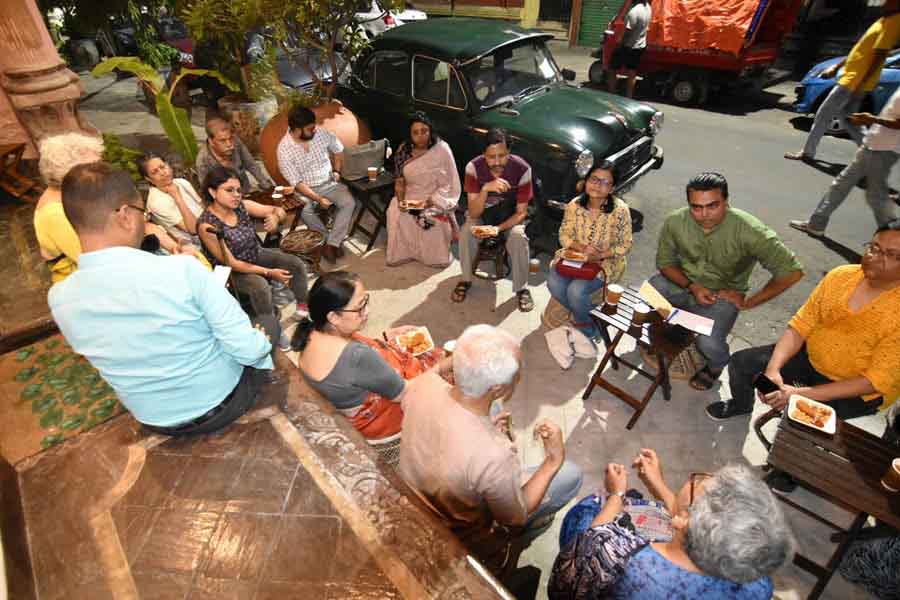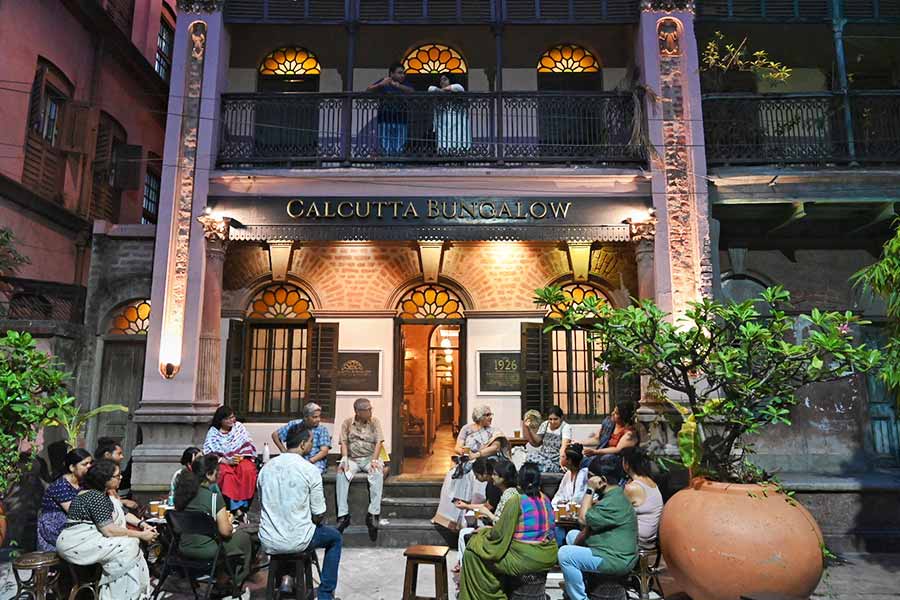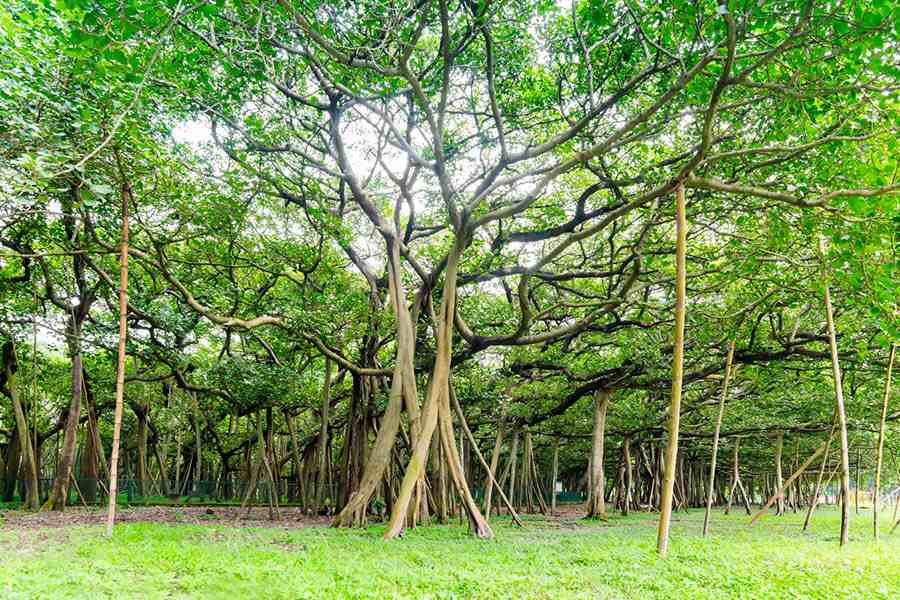The rowak proudly stands at the entrance of almost every old Kolkata home. Over the years, not only has it provided rest but also a space for intellectual discussions, heartfelt exchanges and even scandalising gossip. To keep this tradition alive, Calcutta Walks organised the second edition of its Shonibar’er Adda on the rowaks of Calcutta Bungalow in Shyambazar’s Fariapukur on June 8. In keeping with the recently concluded World Environment Day, the topic of discussion was around the ‘Heritage Trees of Calcutta’. My Kolkata was there.
There was major consensus on how every tree is intrinsically linked to its neighbourhood, preserving multiple stories over the years, having been the setting for teenage love, afternoon slumbers and mythical ghost stories.
Souvik Mukherjee, the convener of the Jessore Road Gaach Bachao Committee, shared his story of petitioning at the Supreme Court to campaign against the felling of 356 trees for the construction of railway overbridges and widening a national highway. His inspiring work led to greater resolve amongst attendees on making an impact in their neighbourhoods. “Souvik’s detailed recounting of the decade-long resistance to save the trees of Jessore Road from the axe of ‘development’ was a revelation,” said filmmaker Subha Das Mollick.

A lot of emphasis was placed on documentation and conservation.
Preeti Roychoudhury emphasised on how problematic it was to equate progress with the felling of trees. “We humans are so strange. We don’t value nature for itself but have to build it into our mythology to appreciate its existence. To preserve our trees, we could start by documenting them,” she said, emphasising the need for an exhaustive list of Kolkata’s heritage trees.
There was also consensus on how, when it comes to documentation, the Grand Banyan Tree at Botanic Garden is the only one that gets importance. In fact, the same Botanic Garden also houses baobab trees just as in The Tolly Club and Alipore zoo.
Storyteller Priyanka Chatterjee aka Golpodidi drew attention to how Gautam Buddha found enlightenment under a tree, while Swami Vivekananda was created under one, immortalising their stories. She questioned why the same kind of storytelling wasn’t applicable to the trees in her life. “Be it the togor tree behind my ancestral home which shed scentless sacred tears all night, or the bokul tree in front of my Dadur Bari which gave countless scented gifts and the kagoj-phool gaach which stood as a lone witness to the newbie on her bicycle as she had a massive fall. These ordinary trees, interspersed with the lives of ordinary people also make for extraordinary references when we map a locality or understand a community,” she said.

The discussion was led by filmmaker Subha Das Mollick and (right) Calcutta Walks and Calcutta Bungalow founder Iftekhar Ahsan.
“The mangrove Heritiera littoralis, related to the sundari of the Sunderbans, is an indigenous tree from the Andaman Islands. A specimen with huge buttresses can be seen beside the auditorium building of the National Library. There are at least two trees at Victoria Memorial, which predate the monument. One of the two, an Alexandrian Laurel (Sultan Champa) is still flowering and bearing fruits,” shared plant enthusiast Susmita Basu. She also pointed out how trees in the city are often bounded by concretised bases from all sides, leaving no space for the trunk to expand and thus making them more vulnerable to being uprooted by high winds.
Diksha Datta, a postgraduate in environmental science from Visva-Bharati University, Santiniketan, felt that the adda was a revelation about how these trees aren’t just greenery but our roots too. “The adda revealed our deep-seated sense of belonging to these trees, along with the urgency for informed conservation. These trees have stood the test of time, it’s high time we stand up for them,” she said.
The evening concluded with Iftekhar Ahsan, the founder of Calcutta Walks and the Calcutta Bungalow, doing a moving reading of Gulzar’s poem, The Forest.


